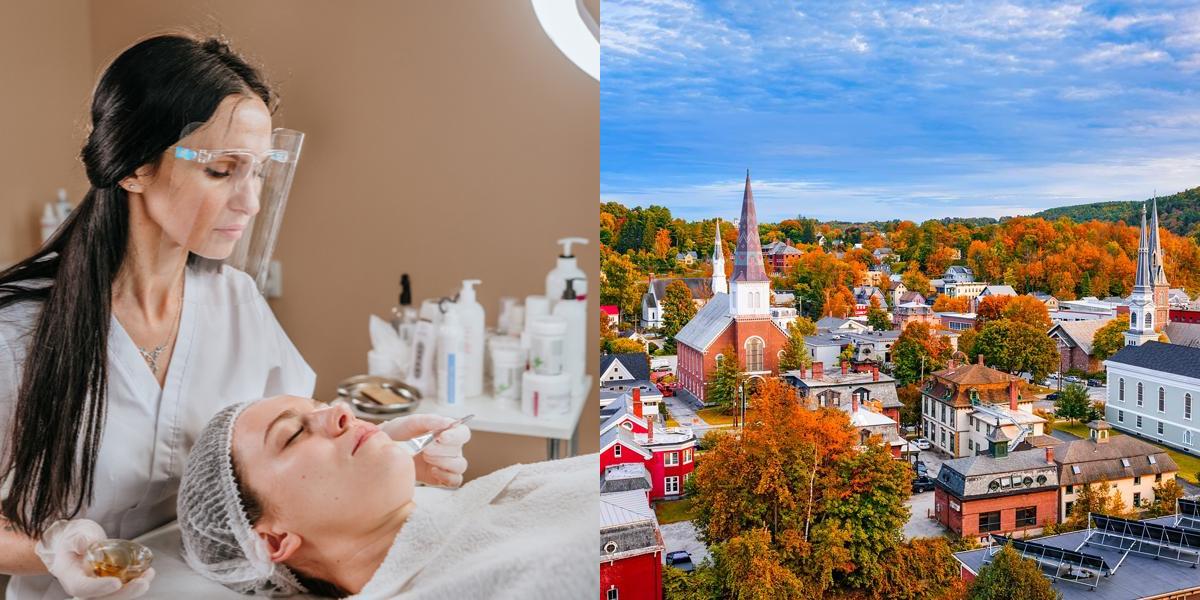How to Become an Esthetician in Vermont

Estheticians are skincare specialists who provide various beauty treatments to their clients. They are trained professionals who specialize in improving and maintaining the health and appearance of the skin. If you are interested in pursuing a career as an esthetician in Vermont, here are the key points you need to know:
How do I get a job as an Esthetician?
Once you have obtained your esthetician certification, you can start looking for job opportunities in the field. Here are some steps you can take to increase your chances of finding a job as an esthetician:
-
Build a strong resume: Your resume is often the first impression potential employers will have of you, so it's important to make it stand out. Highlight your education, certifications, and any relevant experience you have. Include any additional skills or training you have, such as makeup application, product knowledge, or specialized treatments. Be sure to customize your resume for each job application to highlight the skills and qualifications that are most relevant to the position.
-
Create a portfolio: A portfolio is a collection of your work that showcases your skills and abilities as an esthetician. Include before and after photos of clients you have worked on, as well as any special projects or treatments you have performed. A portfolio can help demonstrate your abilities to potential employers and give them a sense of your style and expertise.
-
Network: Networking is a valuable tool for finding job opportunities in any industry, including esthetics. Attend industry events, join professional organizations, and connect with other estheticians and skincare professionals. Building relationships with others in the field can lead to job leads and opportunities. Additionally, consider reaching out to local spas, salons, and skincare clinics to introduce yourself and inquire about any job openings they may have.
-
Apply for jobs: Start applying for esthetician positions at salons, spas, skincare clinics, and other establishments that offer skincare services. Look for job postings online, in local newspapers, and on job boards specific to the beauty and wellness industry. When applying, be sure to follow the application instructions carefully and tailor your application to each specific job. Include a cover letter that highlights your skills and why you would be a good fit for the position.
-
Prepare for interviews: If your application is successful, you may be invited for an interview. Research the company beforehand to familiarize yourself with their services, clientele, and values. Prepare answers to common interview questions and practice your responses. Dress professionally and bring a copy of your resume and portfolio to the interview. Be confident, enthusiastic, and showcase your passion for skincare and helping others.
-
Consider freelance or self-employment: If you are unable to find a job as an esthetician right away, consider freelancing or starting your own skincare business. You can offer your services to clients directly, either in their homes or at a rented space. This allows you to gain experience and build a client base while continuing to search for a traditional job. Many estheticians start their careers as freelancers before transitioning to working at a spa or salon.
Career Paths and Opportunities after Becoming an Esthetician
Becoming a certified esthetician opens up a variety of career paths and opportunities. Here are some options to consider:
-
Spa or salon esthetician: Many estheticians work at spas or salons, where they provide a range of skincare treatments to clients. This can include facials, waxing, body treatments, and more. Working at a spa or salon allows you to gain experience, build a client base, and potentially earn commissions or tips.
-
Medical esthetician: Medical estheticians work in medical spas or dermatology offices, where they perform advanced skincare treatments under the supervision of a doctor. This can include laser treatments, chemical peels, microdermabrasion, and other procedures. Working as a medical esthetician requires additional training and certifications, but it can be a rewarding and lucrative career path.
-
Product sales and education: Many skincare companies hire estheticians to work as sales representatives or educators. As a sales representative, you would promote and sell skincare products to professionals and consumers. As an educator, you would train and educate other estheticians on the proper use and benefits of skincare products. This can be a great option if you enjoy teaching and have a passion for skincare products.
-
Makeup artist: Estheticians often have a strong understanding of skincare and makeup application techniques, making them well-suited for a career as a makeup artist. As a makeup artist, you can work in various settings, such as weddings, photo shoots, fashion shows, or film and television. You can also offer makeup lessons or workshops to individuals or groups.
-
Spa or salon manager: With experience and additional training, you can move into a management role at a spa or salon. As a manager, you would oversee the daily operations of the establishment, including staff management, scheduling, inventory management, and customer service. This can be a great option if you have strong leadership and organizational skills.
-
Entrepreneurship: If you have an entrepreneurial spirit, you can start your own skincare business. This can include opening your own spa or salon, offering mobile esthetician services, or creating your own line of skincare products. Starting your own business requires careful planning, marketing, and financial management, but it can be a rewarding and fulfilling career path.
Final Thoughts
Becoming a certified esthetician requires dedication, hard work, and a passion for skincare. By following the steps outlined above, you can obtain your esthetician certification and start your journey towards a rewarding career in the beauty and wellness industry. Whether you choose to work at a spa, pursue a specialized area of esthetics, or start your own business, there are plenty of opportunities available for estheticians. Remember to continue learning and staying up-to-date with the latest skincare techniques and trends to ensure your success in this ever-evolving field.
Wondering if there's more? Perhaps these other articles will be more helpful if this one isn't exactly what you're after:

Joanna Paragas is part of the Growth team at Dreambound. Her primary role involves creating various automation to streamline workflows and make tasks more efficient for the entire team. Beyond her professional endeavors, Joanna enjoys spending her free time playing with her dogs and enhancing her knowledge by enrolling in online courses.




